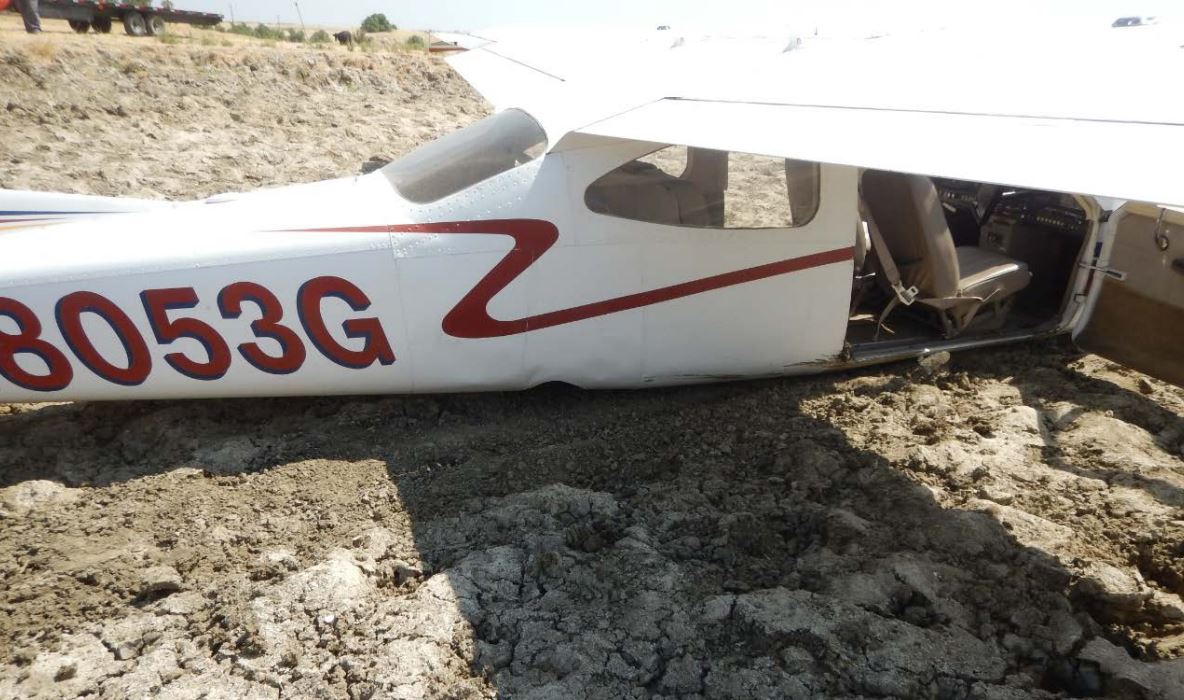
ASN Wikibase Occurrence # 199152
This information is added by users of ASN. Neither ASN nor the Flight Safety Foundation are responsible for the completeness or correctness of this information.
If you feel this information is incomplete or incorrect, you can submit corrected information.
| Date: | Monday 21 August 2017 |
| Time: | 20:00 |
| Type: |  Cessna 177RG Cardinal RG |
| Owner/operator: | Private |
| Registration: | N8053G |
| MSN: | 177RG0053 |
| Year of manufacture: | 1971 |
| Total airframe hrs: | 3907 hours |
| Engine model: | Lycoming IO-360-A1B6 |
| Fatalities: | Fatalities: 0 / Occupants: 4 |
| Aircraft damage: | Substantial |
| Category: | Accident |
| Location: | Byron Airport (C83), Byron, CA -
 United States of America United States of America
|
| Phase: | Landing |
| Nature: | Private |
| Departure airport: | Burns, OR (KBNO) |
| San Jose, CA (KRHV) | |
| Investigating agency: | NTSB |
| Confidence Rating: |
According to the pilot, he was flying a 400-nautical-mile, cross-county flight. He reported that the outside air temperature along the route had been hot. He recalled that the engine temperature had been high and that he “increased the mixture to cool the engine down multiple times.” As he approached his destination, the engine began “coughing for 3-4 minutes” before the engine stopped. He attempted to land at the destination airport but was unable to reach it, so he made a forced landing in a mud-filled drainage channel about .5 mile north of the airport.
The airplane sustained substantial damage to the lower fuselage and windscreen.
A Federal Aviation Administration aviation safety inspector examined the airplane’s fuel system at the accident site. He reported that both fuel tanks were found empty, with about 1/2 cup of fuel at the bottom of the left tank, after removing the sump drain.
Per the National Transportation Safety Board’s Pilot Aircraft Accident Report, the pilot reported that the accident could have been prevented with the “Use of [a] fuel dipstick for better measurement of fuel quantity.”
The pilot reported that there were no preaccident mechanical malfunctions or failures with the airplane that would have precluded normal operation.
Probable Cause: The pilot’s improper preflight fuel planning, which resulted in a loss of engine power due to fuel exhaustion.
Accident investigation:
 |
|
Sources:
NTSB
FAA register: http://registry.faa.gov/aircraftinquiry/NNum_Results.aspx?nNumberTxt=8053G
History of this aircraft
Other occurrences involving this aircraft
| 19 August 2008 | N8053G | 0 | Lake Tahoe, California |  |
sub | |
| Loss of control | ||||||
Location
Images:

Photo: FAA
Revision history:
| Date/time | Contributor | Updates |
|---|---|---|
| 22-Aug-2017 19:23 | Geno | Added |
| 23-Aug-2017 18:47 | Iceman 29 | Updated [Embed code] |
| 15-Mar-2018 20:14 | ASN Update Bot | Updated [Time, Departure airport, Destination airport, Source, Embed code, Damage, Narrative] |
| 15-Mar-2018 21:16 | harro | Updated [Source, Embed code, Narrative, Photo, ] |
Corrections or additions? ... Edit this accident description
The Aviation Safety Network is an exclusive service provided by:


 ©2024 Flight Safety Foundation
©2024 Flight Safety Foundation